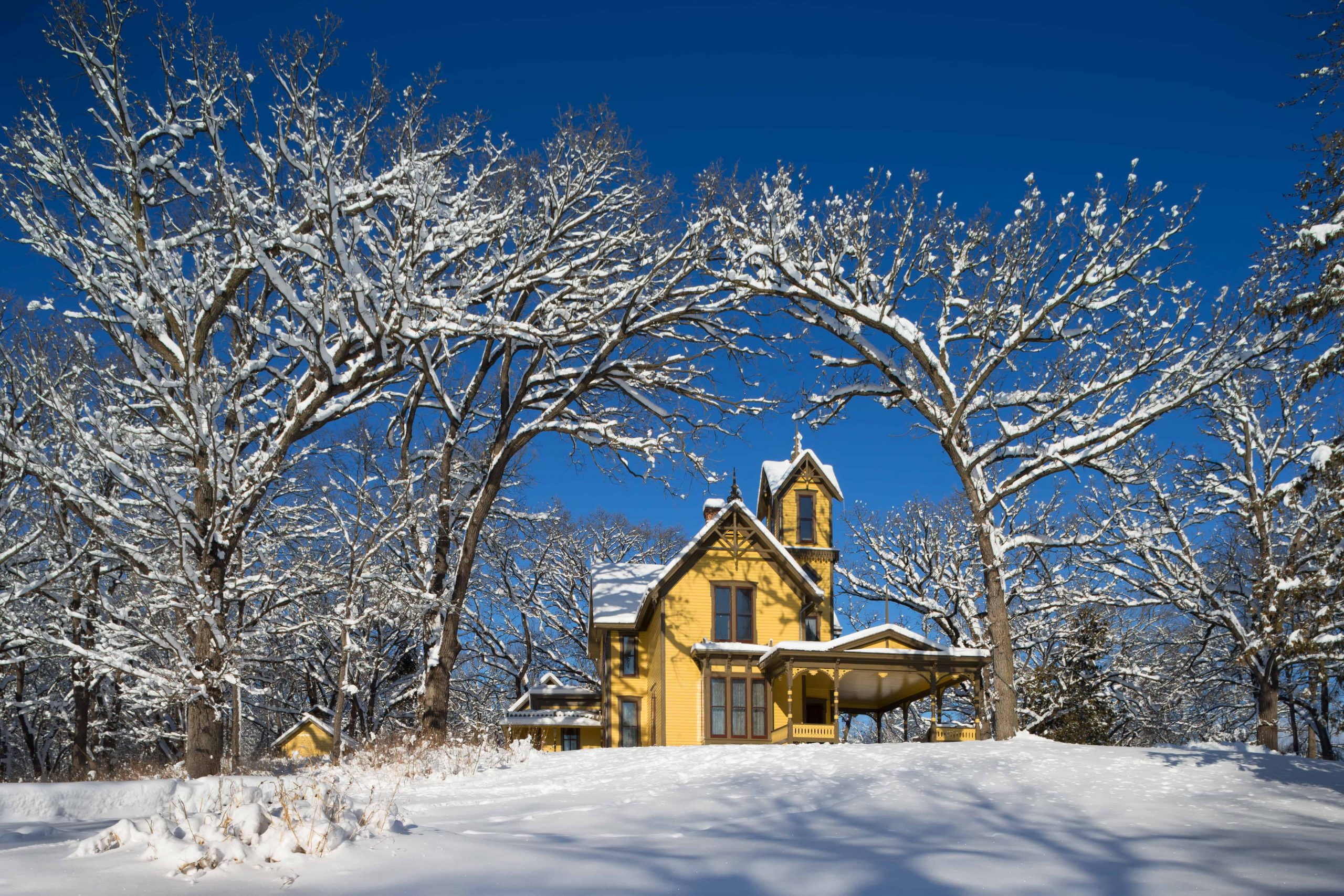Fall is the right time to prepare your home for Iowa’s tough winters and other weather conditions. As winters here can be frigid, preparing and winterizing your house is vital to come through the winter in safety and comfort, and avoid huge repair bills in the spring. Here is a good checklist of things you can do:
Seal doors and windows.
Cold air can easily leak through cracks around your doors and windows, increasing your heating bill. Caulking your windows and weather stripping your doors can help. If you did it last year, then now is the time to check and see if anything needs to be redone and inspect your weatherstripping. Then get a window insulation kit and apply the wrap to the inside of your window. This gives an extra layer of protection.
Clean your gutters.
Blocked gutters can damage your roof, your foundation, and your landscaping. As a minimum, you should clean your gutters in spring and fall. You should also clean them after a major storm that sent a lot of leaves flying. Clean from a ladder, not the roof, and get a spotter if you can. Alternatively, you can hire a professional.
Seal your deck.
A good sealant only needs to be applied every few years. There are also permanent sealants available. Clear treatments tend not to last as long as opaque stains, and often have to be reapplied every year. Many people seal their deck in the spring, but you can also do it in the fall. Either way, an unsealed deck is going to attract mildew and potentially rot. It’s also a good excuse to look your deck over and check it for damage which might have occurred over the summer months.
Trim your trees.
Tree branches falling on your roof can do a lot of damage, and winter ice and snow can cause that as well as winds. Trim any branches that overhang your house or, if you aren’t up to it, hire a tree surgeon to do it.
Insulate your pipes.
If you have pipes in your basement, cover them with foam insulation. For pipes outside, wrap them with heat tape. This will significantly reduce the risk of frozen pipes and the problems and damage they can cause.
Clean the chimney.
If you happen to have a wood fireplace, clean out the chimney before the weather gets bad so as to reduce the risk of fire.
Check and change the filters on your furnace.
Check with the manufacturer’s instructions – some furnaces only need this in the fall, others may need checking through the winter. Oh, and run your furnace before it gets too cold to make sure it still works.
Winterize your garden.
Unhook hoses and winterize your sprinkler systems before the first frost. If you have a rain barrel, empty it and turn it over before a hard freeze, otherwise, it may crack or even “explode.” If you have a gas mower, then once you have stopped mowing, empty the gas tank or use a gas stabilizer.
Reverse your ceiling fans.
You actually want to run your ceiling fans clockwise during winter and counterclockwise during summer, in order to move warm air in the right directions. Most ceiling fans can be reversed by a simple switch.
Put away patio or lawn furniture.
Cover or put away your patio or lawn furniture, grill, and other items that you keep outside during the summer. Make sure that all of your kids’ toys are gathered up and brought indoors or into the garage.
Preparing for winter weather is simple, and these steps can reduce both your heating bill and your risk of expensive damage to your home. They will also help you be cozy through the winter and not have to worry about things you might have left outside.








